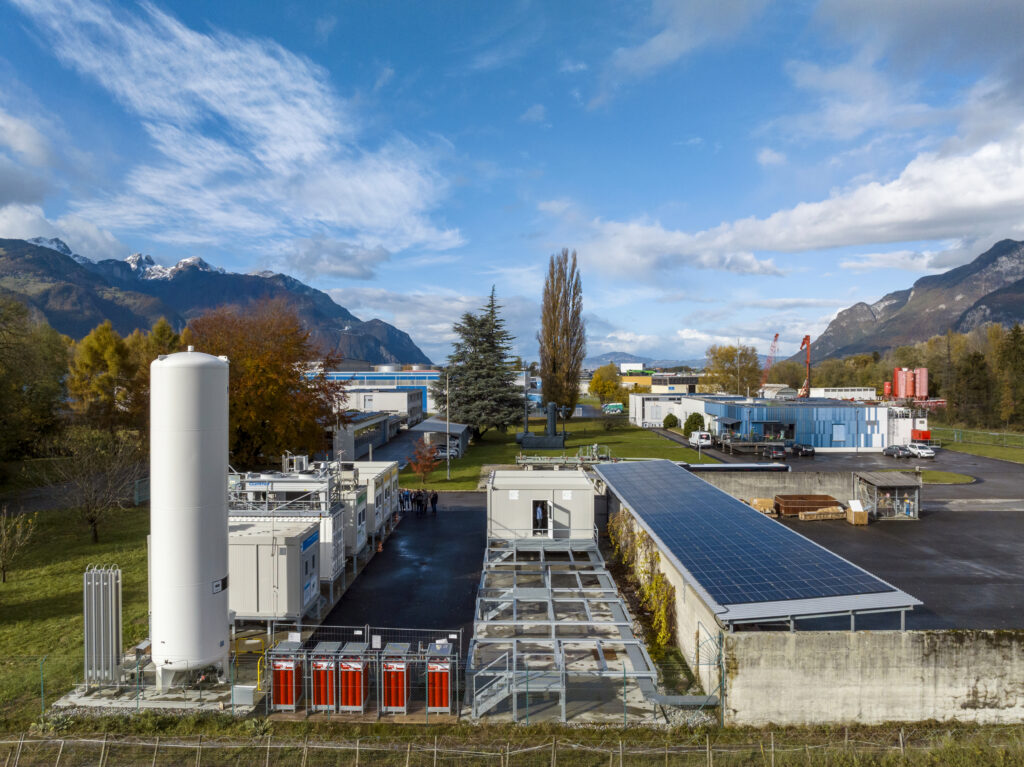Biogas is a renewable energy source, generated by the anaerobic digestion of organic matter, for example:
- agricultural waste,
- manure,
- municipal waste,
- plant material,
- sewage,
- green waste,
- food waste, or
- crop specifically grown for the purpose.
Microorganisms generate biogas in an oxygen-free environment by breaking down the organic material into a final product composed of methane (CH4) and carbon dioxide (CO2). The useful primary component of the end product is methane.
History of biogas #
The history dates back to ancient times. The first recorded use happend as early as in the 10th century BC. Back then, biogas from decaying organic matter provided heat for bath water. By the 17th century, Jan Baptista Van Helmont, a Flemish chemist, noted that decaying organic matter produced flammable gases. However, it wasn’t until the 19th century that the science behind began to take shape.
In the year 1808, Sir Humphry Davy demonstrated that methane was present in the gases produced by the anaerobic digestion of cattle manure. This discovery paved the way for further research and development. The first practical use in the modern sense occurred in 1895 in Exeter, England. Biogas collected from sewage treatment lit streetlamps.
The 20th century saw significant advancements in the technology. India and China have played an important role, biogas plants became an important part of their rural energy infrastructure. India’s Khadi and Village Industries Commission played a crucial role in promoting the technology in rural areas from the 1960s onwards. China, too, developed a massive program, resulting in millions of small-scale plants across the country by the late 20th century.
Technical aspects #
The production of biogas involves a series of complex biochemical reactions. They are usually divided in four stages: hydrolysis, acidogenesis, acetogenesis, and methanogenesis.
- Hydrolysis: In this stage, complex organic molecules such as carbohydrates, proteins, and fats are broken down into simpler sugars, amino acids, and fatty acids by hydrolytic enzymes.
- Acidogenesis: The products of hydrolysis are then converted into volatile fatty acids, alcohols, hydrogen, and carbon dioxide by acidogenic bacteria.
- Acetogenesis: In this intermediate stage, acetogenic bacteria further convert the volatile fatty acids and alcohols into acetic acid, hydrogen, and carbon dioxide.
- Methanogenesis: Finally, methanogenic archaea produce methane and carbon dioxide from acetic acid, hydrogen, and carbon dioxide. This stage is crucial as it determines the efficiency and output of the production process.
Various configurations of biogas plants exist, such as fixed-dome, floating-drum, and plug-flow reactors. These plants can vary in scale from small household units to large industrial systems. The choice of design depends on factors like the availability of feedstock, climate conditions, and the intended use.
The produced biogas is often used directly for cooking, heating, and lighting. Alternatively, combustion engines or turbines convert it into electricity. Anaerobic digestion generates digestate as a byproduct. Digestate is rich in nutrients, it is a high-quality organic fertilizer.
More biogas? #
An interesting property of raw biogas is that it contains both carbon dioxide and methane. The carbon dioxide can be converted into more methane by using additional hydrogen and a system like GRZ’s UPSOM reactor.

In conclusion, biogas technology offers a sustainable way to manage waste and produce renewable energy. Today, there are ongoing advancements in biogas production techniques and increasing environmental concerns about the use of fossil fuels.
Therefore, biogas will likely continue to play a significant role in the global energy landscape.





